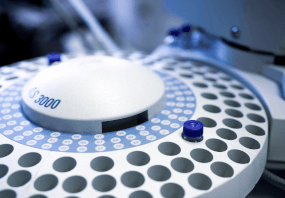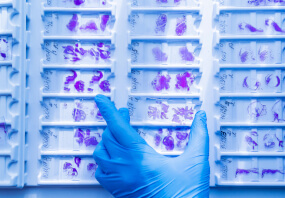General description
Research area: Cell Signaling
Endothelin 1 (ET-1) is a peptide hormone located in the endothelial cells and belongs to the endothelin family. It is a derivative of pre-pro-ET-1 which is later converted to mature ET-1 by a group of ET-converting enzymes (ECEs), endopeptidases, chymases, and non-ECE metalloproteinases. The EDN1 gene is mapped to the human chromosome at 6p24.1.
Application
Endothelin 1, Human and Porcine - CAS 117399-94-7 – Calbiochem has been used:
- to study its effects on the production of erythropoietin under normoxia and carbon monoxide-induced hypoxia in rat models
- as a protein kinase C (PKC) agonist to study its effects on the phosphorylation of myofilament proteins in rat myocytes
- to induce a hypertrophic-like state to study its effects on contraction pressure in normal and mutated human induced pluripotent stem cells (hiPSC)-derived cardiomyocytes
Biochem/physiol Actions
Endothelin 1 (ET-1) acts as a mediator of paracrine and autocrine functions. The production of ET-1 is upregulated under pathophysiological conditions and is produced in several types of cells such as cardiac myocytes, vascular smooth muscle cells, and inflammatory cells like leukocytes and macrophages. ET-1 is a potent vasoconstrictor peptide that is stimulated by risk factors in several types of cells for cardiovascular diseases. It is involved in many biological effects such as pro-inflammatory actions, platelet activation, stimulation of free radicals, and mitogenic and proliferative effects. ET-1 plays a role in pulmonary physiology, neurological function, autoimmune disorders, transportation of electrolytes and fluids, and cancer. It is an essential component for the development of embryonic neural crest-derived tissues. ET-1 is involved in osteogenesis by promoting osteoblast proliferation by activating Wnt signaling pathway.
Packaging
Yes
Warning
Toxicity: Standard Handling (A)
Sequence
H-Cys¹-Ser-Cys³-Ser-Ser-Leu-Met-Asp-Lys-Glu-Cys¹¹-Val-Tyr-Phe-Cys¹⁵-His-Leu-Asp-Ile-Ile-Trp-OH (disulfide bonds: 1 → 15; 3 → 11)
Physical form
Supplied as an acetate salt.
Preparation Note
Dissolve peptide initially at 8 mg/ml in 80% cold acetic acid, then dilute with distilled water to achieve 5% acetic acid and 0.5 mg/ml peptide.
Reconstitution
Following reconstitution, aliquot and freeze (-20°C). Stock solutions are stable for up to 2 weeks at -20°C.
Other Notes
Cesari, M., et al. 1996. Am. Heart J.132, 1236.
Gresser, O., et al 1996. Biochem. Biophys. Res. Commun.224, 169.
Murata, S., et al. 1995. J. Pharmacol. Exp. Ther. 274, 1524.
Hexum, T.D., et al. 1990. Biochem. Biophys. Res. Commun. 167, 294.
Itoh, Y., et al. 1988. FEBS Lett. 231, 440.
Yanagisawa, M., et al. 1988. Nature 332, 411.
Legal Information
CALBIOCHEM is a registered trademark of Merck KGaA, Darmstadt, Germany
Shipping Information:
Hazmat Fee: $65.00 + applicable shipping charges are added after the order is placed.
More Information: https://cenmed.com/shipping-returns
- UPC:
- 51182410
- Condition:
- New
- Availability:
- 3-5 Days
- Weight:
- 1.00 Ounces
- HazmatClass:
- Yes
- MPN:
- 05-23-3800-0.5MG
- CAS:
- 117399-94-7












